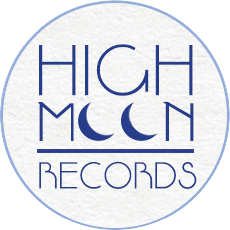ABOUT US
High Moon Records
High Moon Records is a boutique reissue record label, with a catalog comprised of essential releases acknowledged music visionaries. All our releases feature deluxe packaging, extensive liner notes by authoritative writers, stunning artwork with never-before-seen archival photos, and sparkling re-mastered audio often with rare bonus tracks.
George Baer Wallace and the late JD Martignon founded High Moon Records in 2010, with the vision of a record label as an exclusive outlet for the music they loved most, but their collaboration—and love of music—had been years in the making.
After moving from Paris to New York in the early 1970s, JD had been a fixture at Max’s Kansas City drinking in the depths of the New York music scene, before he decided to open his own record store. His venture, Midnight Records, gained a world-wide reputation as a store for obscure and essential rock from the 1950’s onward, fueled by a strong mail order business. Midnight Records became a Chelsea institution, a must-stop shop for all music fans, from legendary musicians to rabid collectors.
In the 1980s Midnight Records had expanded into a vinyl label showcasing everyone from the legendary Screamin’ Jay Hawkins to local New York Punk bands. Like a lot of indie labels in the late 80s, it did not navigate the shift to CDs and Midnight Records as a label ceased while the store continued on.
In the early 2000s, George Baer Wallace was one of the music obsessives who would frequent Midnight Records. A NYC native now living in Chelsea who would spend hours poring over the extensive and exhaustive releases for sale, George struck up a friendship with the eccentric owner JD and soon a deep bond formed. Through endless conversations and late night discussions an idea was born, a new label that showcased the gloriously obscure music they both loved that demanded more attention.
George and JD had an extensive and expanding wish list of titles that needed to be properly illuminated. Always at the top of that list was Arthur Lee and Love’s unreleased masterpiece from 1973, Black Beauty. Although it had existed as poorly sourced bootlegs for years, the new label, now christened High Moon Records had deemed it essential to finally give the lost record the proper release it deserved.
Energized with their vision, they set about tracking down vanished masters, sifting through the detritus of shuttered studios and the archives of an abandoned vanity label. When an acetate in pristine condition surfaced, the project came into focus and it was imperative, the first release of High Moon Records had to be Love’s lost gem. In December 2012 the label proudly released Black Beauty on vinyl to the world, and the journey had begun.
“When JD and I were coming up with names for the record label we had a few to consider,” remembers Wallace. “High Noon Records was one, but it had close associations to a movie of the same name. One other name we discussed was My Flash On You Records, an homage to a song on the debut Love LP.”
George Wallace was born in 1970 in New York City at Lennox Hill Hospital. His mother Lois Wallace, was a Vassar College graduate and literary agent and father George, a lawyer who with a Master’s degree in History from Yale.
“My father started at GP Putnam’s Sons Publishing and went to Holt became editor in chief. My mother started at Putnam’s as an assistant to Harvey Ginsberg, onetime senior editor at William Morrow and Company and Harold Olber, and went to the William Morris Agency. By 1966 at age 26 she became head of the William Morris Literary Department. She represented Eric Segal, who wrote the screenplay for the Beatles’ Yellow Submarine. At her suggestion she convinced Segal to write the novel Love Story.
“My parents were fans of Cole Porter and Irving Berlin and my dad loved opera. The Beatles’ Sgt. Pepper was played around the house.”
Young George attended Dalton Day School, a progressive high school in New York.
“I’ve always loved music since a kid, danced around with my nannies. I was Danny Zuko in an all-male version of Grease.” After 8th grade, Wallace transferred to Choate Rosemary boarding school in Connecticut.
“I became a big fan of the Grateful Dead. I don’t like the word gateway, but they paved the way for me to discover so much music and records, and the majority of the sounds I was now hearing were from the west coast, largely San Francisco. “I did make an attempt to enroll at U.C. Santa Cruz,” he admits, “but could not get in. I did feel the draw and allure of the music from the west coast. Initially Northern California. And I went to San Francisco State University. Majored in History and a minor in English. At San Francisco State University I literally lived near the former site of Bill Graham’s Fillmore on Post and Steiner. I have watched The Grateful Dead Movie from 1977 probably 100 times,” George proudly confesses.
During his San Francisco residency, he had discovered Moby Grape, followed by Hot Tuna, and became aware of the landmark music venues, the Avalon Ballroom and the Matrix Club. Wallace then found and heard the sounds of Los Angeles and Hollywood of the mid to the late sixties bands in the form of the Doors, the Byrds and the Flying Burrito Brothers.
“I soon learned, it was like I found a hidden cage with all this music from Southern California and stumbled upon the secret music of Los Angeles.”
“At age ten I loved the Monkees. Then it was Buffalo Springfield, Doors, Sons of Adam, Love, Gene Clark, Gram Parsons, Neil Young, Crosby, Stills, Nash & Young, all the while still digging the music of San Francisco. This is a world that pretty much is before the internet and it was word of mouth and traditional newspapers and some music magazines.”
Wallace subsequently transferred to another Bay area school, Menlo College, earning a Master’s Degree in Humanities. “I wanted to be a filmmaker. My father explained to me I could do that after grad school at NYU where I studied film.”
After graduation, Wallace had an internship at PBS-TV working on the acclaimed American Masters series on the Lou Reed, Willa Cather and Georgia O’Keefe profiles, and location scouting and various office functions. A highlight of his tenure at American Masters was serving as researcher and assistant editor on the Ella Fitzgerald feature. He also assisted legendary film editor Charlotte Zwerling.
Wallace interned at Tribeca Productions under Robert De Niro and Jane Rosenthal and was hired on various films, including director Kimberly Pierce’s Boys Don’t Cry. George then joined the VH-1 News department writing narrative, interstitial banter for the on-air video deejays, and had a stint under Bill Flanagan at the network who developed Legends.
But the calling for a career, or an expedition in music, was obvious. A seminal moment in the life of George Bear Wallace occurred in 1995.
“I was sort of familiar with the group Love and started to read about bandleader Arthur Lee. Their first four albums really made a big impact on me,” underscores Wallace. “I read about Arthur Lee and Love I the New York press. I didn’t care if they were a mixed race band. To me it was raceless music. It was species music that was filtered through Arthur Lee’s own unique perspective. “I then went to see Arthur and his group in person. I loved his recordings, voice, and lyrics already. In a live setting I had never heard anyone sing like that. A way of the way he stretched out lyrics. I could feel the pre-thought but still improvisation in his words and band music created. Every little nuance made impact. It was the vocals, the tonality of his vision in each phase of Love. That’s what happens when you really fall for someone’s music and get inspired by it. It was distinct and fresh. There was nothing like it. One of a kind. There were revelatory chord changes. It went to a place where language sort of fails. It hits the mind and body. It’s addictive.”
To Wallace, the Love catalog and witnessing three Arthur Lee shows in New York were a guidepost to his own future. Going beyond record collecting and bringing his passion into the retail record marketplace.
“There are a handful of musicians I actively collect and want to support their work. Skip Spence, Alex Chilton, Townes Van Zandt, Moby Grape, the Ace of Cups, Gram Parsons, The Flying Burrito Brothers, the Byrds and their various permutations. No one sounds like any of those bands. So unique.
“I had come to a point in my early and mid-twenties, this is before the internet, where I wanted to hear more of their music. These people took it a step further and I could relate to them. Each of them had a different formula. Some had initial commercial success or brushes with it. Like Gene Clark with the Byrds.
“I also sort of realized there is no other country like America, where guys who liked bluegrass, jug band, jazz and pop music could bring us the Grateful Dead. Or the environment of Southern California could only deliver the Doors, Love, Byrds, and the Sons of Adam. I think the bohemian elements of both San Francisco and Los Angeles informed these rock bands. I liked the Beatles, I loved Michael Jackson’s Thriller, but this was a new and rich musical world, regions I needed to be involved with.”
Wallace further provides the philosophy and methodology behind his High Moon label decisions and the choices he makes about recording artists and their lost treasures he is bringing to our ears.
“Music is a very important part of our lives. We’re all constantly searching for new sounds or sounds from the past that truly deserve to be heard. Almost an elusive journey that can yield results we never planned on. Especially when you are running a label and searching for recordings that need to be discovered and heard.”
Part of the journey, on some level for George is primarily documenting a neglected and somewhat overlooked west coast music world. His label turns out to be some sort of logical extension of his passion.
“I’m always aware about the concerns of the reissue or never released record world. That is why the High Moon label has extensive liner notes in the packages with rare and never seen photos. When appropriate there are bonus tracks.”
2024 will being more audio delights from Wallace and High Moon. Currently in development and in production are projected new releases by Terry Dolan, Arthur Lee’s catalog, The Ace Of Cups, plus a very special compilation of live, unreleased tracks culled from the Avalon Ballroom and the Matrix Club.
The continued growth of High Moon has pleased George Wallace over the last decade.
“It’s a real pleasure to receive wonderful comments from fans and collectors. Some fans in England raved about Arthur Lee’s Black Beauty, others tout the Ace of Cups album, while some are just happy to hear more music from Gene Clark.”
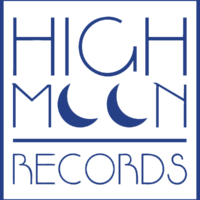
Latest News
-
 HIGH MOON RECORDS ANNOUNCES OFFICIAL RELEASE OF SLY & THE FAMILY STONE’S THE FIRST FAMILY: LIVE AT WINCHESTER CATHEDRAL 1967
June 5, 2025
HIGH MOON RECORDS ANNOUNCES OFFICIAL RELEASE OF SLY & THE FAMILY STONE’S THE FIRST FAMILY: LIVE AT WINCHESTER CATHEDRAL 1967
June 5, 2025
-
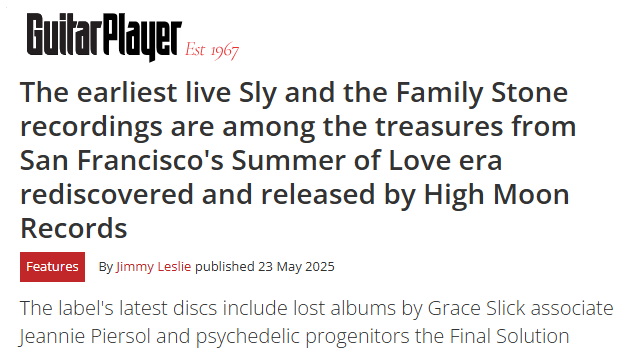 The earliest live Sly and the Family Stone recordings are among the treasures from San Francisco’s Summer of Love era rediscovered and released by High Moon Records
May 27, 2025
The earliest live Sly and the Family Stone recordings are among the treasures from San Francisco’s Summer of Love era rediscovered and released by High Moon Records
May 27, 2025
-
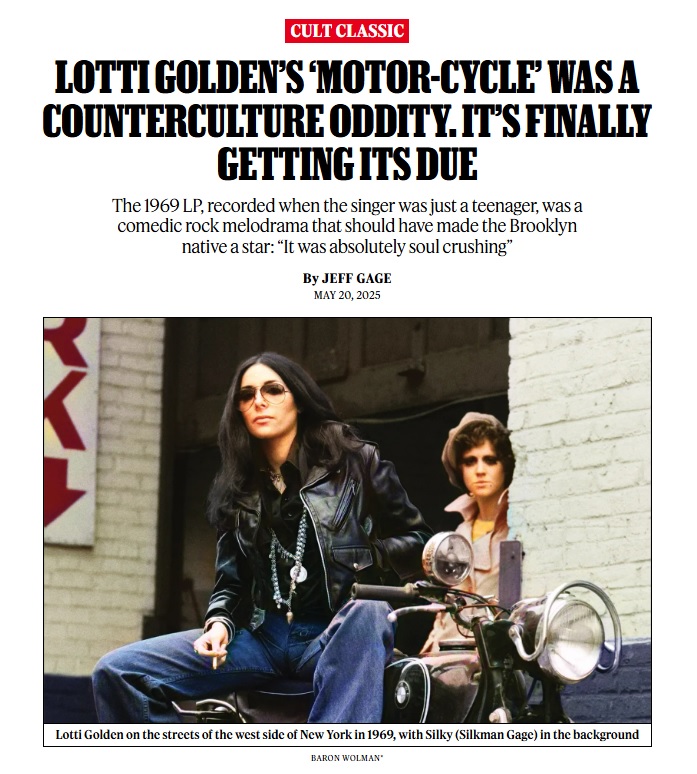 Lotti Golden’s ‘Motor-Cycle’ Was a Counterculture Oddity. It’s Finally Getting Its Due
May 20, 2025
Lotti Golden’s ‘Motor-Cycle’ Was a Counterculture Oddity. It’s Finally Getting Its Due
May 20, 2025
Latest Release!

